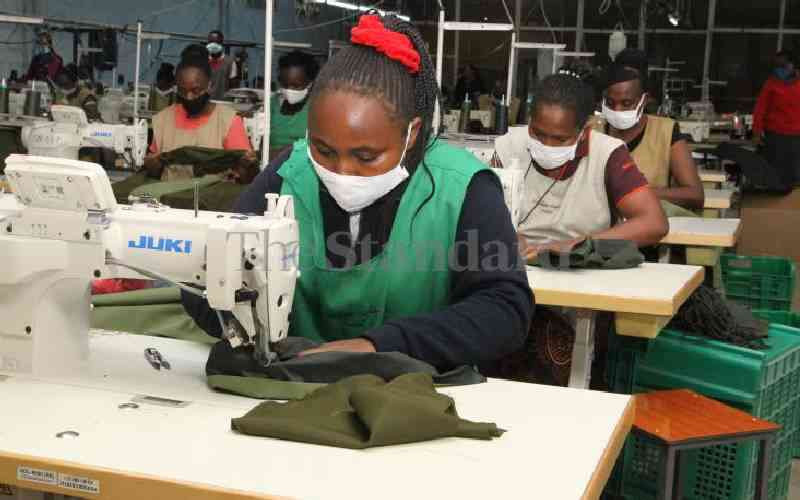 |
|
In appearance, behaviour and biological make-up, chimps groom, carry their little ones and Pocko shows how he walks on his feet. [Photo: George Mulala/ Standard] |
By Marion Ndung’u
When it is feeding time at the Ol Pejeta Conservancy, the chimpanzees form an organised queue. They pick some fruits and tea and move on to sit at an open area before they start to enjoy their meal.
Watching them, one cannot miss the similarity between these animals and human beings.
At the centre — one of the seven in the world that takes care of orphaned chimps — there are 42 chimpanzees most having been rescued from central Africa regions where they were enslaved or ensnared by poachers. Chimps are highly endangered.
Five newborns
John Kiama, a caretaker at the centre, says five chimps have been born to the centre since it started rescuing the apes. But the initial plan was not for them to breed as Nanyuki is not a natural habitat for them.
Explains Kiama, “The babies were born due to the failure of the Norplant chip planted under the skin to prevent conception.”
Like human beings, chimpanzees can be administered with family planning methods to prevent the growth of population.
The sanctuary has two groups of chimpanzees separated by the Ewaso Nyiro River. The two cannot mix simply because chimps can’t swim.
They sleep in stone houses to prevent them from suffering from diseases caused by cold temperatures.
The animals are fed three times a day on carrots, cabbages, spinach, peanuts, fruits as well as other foods eaten by man as the environment does not allow them to be fully dependent on the wild for food.
“For the evening meal, they usually have ugali mixed with eggs to keep them warm and strong,” says Kiama.
The chimps hunt in the 250 hactare enclosure for small animals. During feeding time, Kiama says, they count the animals and in case any is missing, they search for it in the bush and that way they are able to keep their records.
Chimps are the closest species to human beings sharing a remarkable 98.6 similarity in DNA. When The Standard visited the sanctuary recently at 3pm, the time for visiting, we found the place busy. The parking lot was full with school buses and tourist’s vans taking the bulk of the space.
Having been used to visitors at this hour the chimps often make their way to the viewing area and parade themselves for the visitors. This is another example of the remarkable learning abilities they posses.
Know colours
Once visiting time is over they quickly disperse into the bush until the following day.
Peter Wamugunda, a naturalist, explains that chimps are the only other mammal, apart from man, that can differentiate colours.
“During feeding time, each chimp has his or her own cup in a different colour. None picks the other’s cup,” says Wamugunda.
Each of the chimps has a name and history written on a board in a raised observation tower at the sanctuary.
One story of Poco sums up the kind of suffering some of these animals undergo. Poco was nine years old when he was caged in a tiny cage such that he could only stand or sit.
This was in Bujumbura, Burundi, where he served as an entertainer at a garage.
He was later rescued and brought to the sanctuary. The metalic cage is displayed at the information centre at the sanctuary. Many of the chimps at the centre have a similar story — caged and used as entertainers.
Others were kept as pets but when they grew bigger and stronger as well as becoming destructive, they were caged to contain them. At six to seven years the average chimpanzee is stronger than an adult human being. In some countries chimpanzees are sold on the streets either for meat or as pets.
“A chimpanzee is so strong it can kill a cheetah,” says Kiama.
Now Poco can walk on two feet comfortably, a feat he achieved after his prolonged stay in the cage. At the sanctuary Poco and the other chimps remember their past stunts and greatly entertain visitors.
Bush meat
Besides being used as entertainers, the chimpanzees are also hunted down for bush meat in some countries in central Africa. Because of their similarity to humans, scientists use them for research in laboratories.
Started in 1993, the Ol Pejeta centre provides a safe haven for such mistreated chimps.
A chimp mother is protective of her child and will not allow any other chimp to touch it until it is more than a year old. The care of a young one is, however, the responsibility of the group.
The chimps’ way of living at the centre provides an avenue for them to socialise and integrate.
The lifespan of a chimpanzee is between 45-60 years. The oldest chimp at the sanctuary is 32 years old.
 The Standard Group Plc is a multi-media organization with investments in media
platforms spanning newspaper print operations, television, radio broadcasting,
digital and online services. The Standard Group is recognized as a leading
multi-media house in Kenya with a key influence in matters of national and
international interest.
The Standard Group Plc is a multi-media organization with investments in media
platforms spanning newspaper print operations, television, radio broadcasting,
digital and online services. The Standard Group is recognized as a leading
multi-media house in Kenya with a key influence in matters of national and
international interest.
 The Standard Group Plc is a multi-media organization with investments in media
platforms spanning newspaper print operations, television, radio broadcasting,
digital and online services. The Standard Group is recognized as a leading
multi-media house in Kenya with a key influence in matters of national and
international interest.
The Standard Group Plc is a multi-media organization with investments in media
platforms spanning newspaper print operations, television, radio broadcasting,
digital and online services. The Standard Group is recognized as a leading
multi-media house in Kenya with a key influence in matters of national and
international interest.










